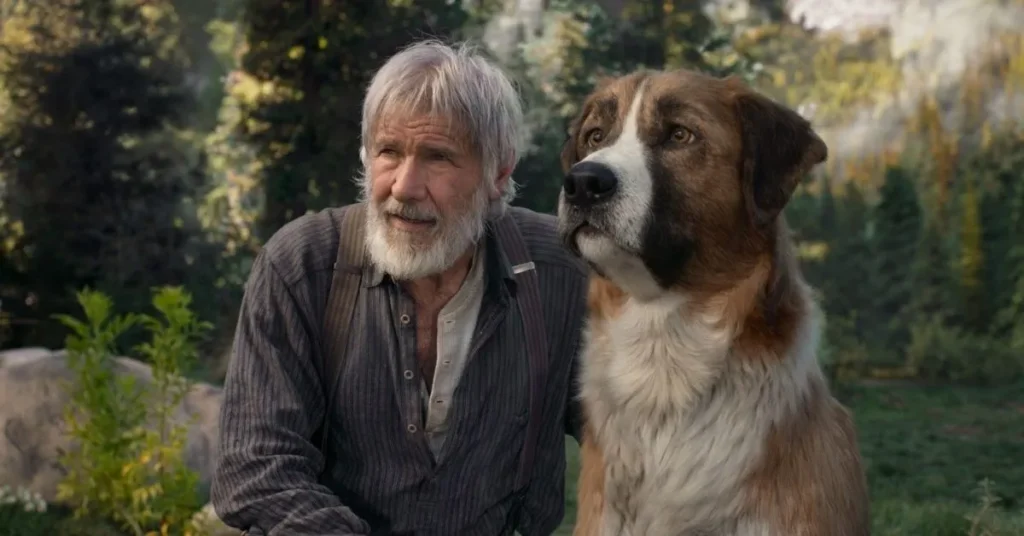John Thornton died by a gunshot wound right at the end of the movie. He is killed by Hal (the villain of the plot), who had heard that John has found gold; Hal comes to John’s mountain cabin and sets it on fire during the quarrel, then shots him.
Who was John Thornton?
John Thornton is the main character in The Call of the Wild, an experienced miner living in Klondike, who decides to go in search for gold in Yukon and becomes the master of Buck, a Bernese mountain dog.
How was John Thornton’s personality like?
John, a man in his fifties, is described as a lonely and sad person, with some drinking issues (based on his son’s death, Tim, several years ago). Despite all the troubles he experienced, he has a kind and brave spirit, he likes adventure and hunting, has a deep connection with nature and is an animal lover.
Throughout the movie, he proved many times that he would do anything to protect the ones he loves.
Who was John’s companion in the movie?
At the beginning of the movie, Buck was a spoiled dog living in a big estate in California, but the following experiences he went through were pretty sad. Short story, he passed from owner to owner, not managing to adapt or trust anyone so much.
Being used as a sled dog in the Arctic, Buck was treated very badly. It was John the one who rescues Buck of being beaten and killed by Hal, thus becoming his new master until the moment he dies.
We can definitely say that it was a moment that we all expected, because these two had a lot in common. Soon enough, John earns Bucks’s trust, and he became very loyal of him.
Throughout the plot, they both save each other several times and Buck finds out what true love really is.
Was John a master or a friend?
John and Buck definitely shared a reciprocal love, sense of protection and courage. John is not really a people person and he usually prefers to be away from civilization, but he really loves Buck’s company.
There are many scenes where John talks to Buck and Buck really understands everything, showing how intelligent and compassionate he is. So, we can really state they have a deeply and unique connection within their journey, filled with quality moments.
Even if we look at John as being Buck’s master, he still manages to be the best one Buck has ever had. He offers Buck all the freedom when he decides to also spend time with the wolves, understanding his nature and choices.
What does wildness symbolize in the movie?
The wildness is presented in two different forms: the connection between John and nature, and Buck’s evolution from a domestic town dog to embracing his wild side.
John was very familiar with the nature and the harsh conditions in winter, showing his abilities multiple times in the movie.
He was the one who suggested Hal that the ice would break if he insists on continuing his road, as the sleds were very loaded and heavy, and the dogs were struggling. John is not afraid of the wild and he adapts very easily.
On the other hand, Buck suffers a major transformation throughout the movie. He is stolen from his original family and put to heavy work. He tried to adapt every time, but this forced him into changing his perspective.
He became a stronger dog, develops new skills and become friends to a pack of wolves. Discovering his wild nature, Buck stops being a domestic dog and embraces the wild spirit, being adopted by the wolves.
After John’s death, the audience would think he would want to find his way back to California, but instead he chooses living in the nature rather than inside a home.
What did John teach Buck?
John was the first person who took proper care of Buck, showing him love, respect, and affection. But he did not teach him only that; he also taught him freedom, the taste of adventure and learning one’s true identity.
Buck had a deep respect for his companion and would have done anything for him. John’s death left him very sad, even if he tried to save him from Hal’s attack and revenge him.
He further moves on and decides to start a new chapter in his life, but without forgetting the adventure that he and John had, and always carrying him in his heart and mind.






